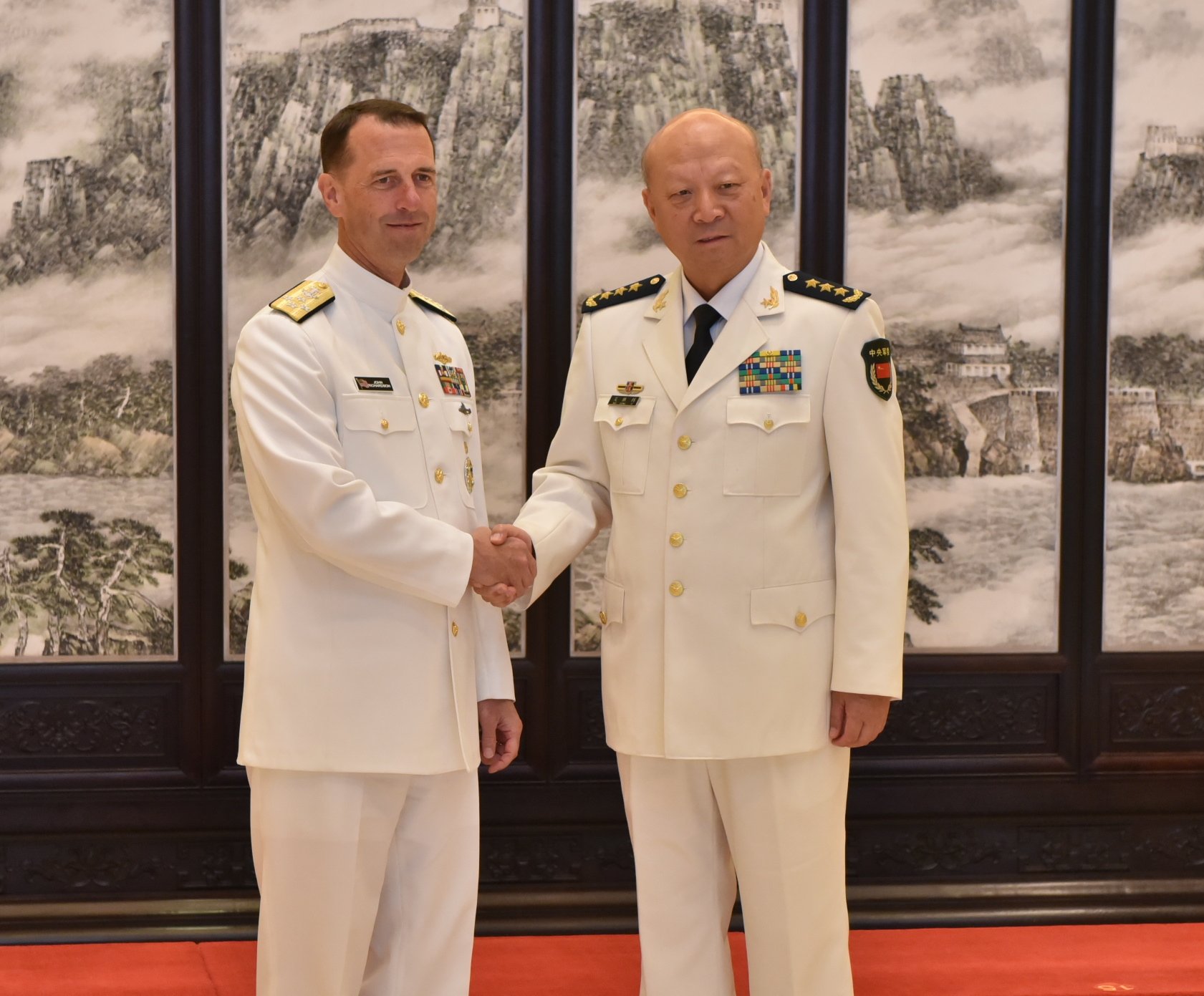
The head of the People’s Liberation Army Navy told his U.S. counterpart that China has no intention of stopping its island building campaign in the South China Sea Spratly Islands, according to Chinese state-controlled media.
In the meeting between Adm. Wu Shengli and Chief of Naval Operations Adm. John Richardson, state-controlled media reported Wu told Richardson China would complete its push to outfit several artificial islands off the coast of the Philippines despite an international arbitration tribunal ruling last week that invalidated China’s expansive claims in the South China Sea.
“We will never stop our construction on the Nansha Islands [Spratly] halfway… the Nansha Islands are China’s inherent territory, and our necessary construction on the islands is reasonable, justified and lawful,” PLAN’s Wu Shengli told Richardson, as quoted by the Xinhua News Agency on Monday.
“Any attempt to force China to give in through flexing military muscles will only have the opposite effect.”
Wu also said that Beijing would reserve the right to increase defenses in the location, according to state media.
Separate to the meeting, the deputy chief if the Joint Staff Department of the Central Military Commission warned continued freedom of navigation operation by foreign navies in the South China Sea near Chinese holdings could be dangerous.
“This kind of military freedom of navigation is damaging to freedom of navigation in the South China Sea, and it could even play out in a disastrous way,” Adm. Sun Jianguo said at a Tsinghua University on Saturday, according to the Hong Kong-based South China Morning Post.
The U.S. has conducted three freedom of navigation operations since October in the South China Sea, each time drawing the ire of Beijing.
Aside from the declaration of Beijing’s position on the ongoing island campaign, Wu said continued South China Sea security cooperation between the U.S. and China is, “the only correct option.”
Wu and Richardson discussed maritime issues for about three and a half hours.
“I thought the discussions were very open and broad in scope and very honest. We really covered the entire spectrum of our relationship – from those areas where our cooperation and collaboration is doing very well, such as participation in RIMPAC, areas such as port visits, areas such as use of the CUES arrangement to regulate our encounters at sea and keep them safe and professional,” Richardson said in an audio statement distributed by the Navy.
“We highlighted how useful and beneficial those areas but on the other hand we didn’t dodge the more contentious issues, the more solemn issues as the Chinese would say regarding disposition in the South China Sea, the recent court of arbitration ruling and those issues as well, recognizing that it’s only through being completely frank and honest that we’re going to make any kind of progress on these areas. Both of us recognize it’s an extremely important relationship and the that the navy to navy part of that relationship bears a great responsibility to make sure that we get to our mutual benefit.”
Following his visit in Beijing, Richardson is scheduled to visit China’s North Sea Fleet for a visit the Chinese Navy’s submarine academy and tour the aircraft carrier Liaoning (CV-16).





